October 1917: Mt San Gabriele
Only one event could be selected for this month, the glorious defense of Mt San Gabriele. In August 1917, the Italian army launched a major offensive in the south-eastern sector of the Italian front. There were two main attack directions. A breakthrough in the upper reaches of the Isonzo threatened with both the possibility of breaking into the Laibach basin, or in the southern direction with sweeping up the defensive line and advancing in the direction of Trieste. The other southern direction of attack on the Karst plateau was also aimed at the capture of Trieste. The first goal of the attack here would have been to occupy the Fajti Hrib and the Hermada heights.
The Italian attack was successful in the first mentioned area. The Italians brought significant areas under their control on the Bainsizza plateau, and then turned south. In widening the breakthrough to the south, the next obstacle was the peak of Mt San Gabriele, behind which the Wippach River basin would have provided an easier terrain to attack. But the mountain was not captured. The area was defended by the 20th Honvéd Division. The division which previously was stationed in the northern part of the Karst plateau, in the area of Mt San Michele and the village of San Martino, and had a lot of experience in fending off Italian attacks.

The most northern important reference point for the Mt San Gabriele position was a large cavern, an underground rock cave. This so-called “Geschützkaverne”, i.e. gun cave, was built back in 1916, with the aim of providing artillery support for the defensive lines on the banks of the Isonzo and in the Görz front. Since these areas fell into Italian hands in the summer of 1916, in September 1917 the prepared cave system was used as a stronghold point for the infantry companies defending the mountain. The mountain was temporarily occupied by the attacking Italian infantry several times. At such times, the bucks trapped in the cave called for a fire strike on the Italian infantry above them by firing colored signal rockets, and after the artillery fire, they broke out of the cave and took possession of the blood-soaked height again.
The attached map shows the location of the mountain: it was a projecting position that the Italian artillery could fire effectively from three directions. Of course, all movement, especially supplying the defenders with ammunition and food, was only possible at night, but even then at the cost of heavy losses, since the firing continued even then. The honvéds occasionally carried out counterattacks. For example, on October 2nd, with a dawn attack, two important points of the mountain, the northern point (Stützpunkt Nord) and elevation point 468, were recaptured from the Italians. 500 POWs were taken during the attack. On the same day, an overwhelming Italian counterattack took back the positions taken in the morning. The 4th honvéd infantry regiment reported 13 dead, 149 wounded and 89 missing that day (most of the latter also died). The Italian attacks against the mountain and especially the Geschützkaverne continued until the second half of October. On October 13, the 4th honvéds were replaced by the 17th regiment. The great counter-offensive of the Monarchy at the end of October 1917 only put an end to the Italian enterprises.
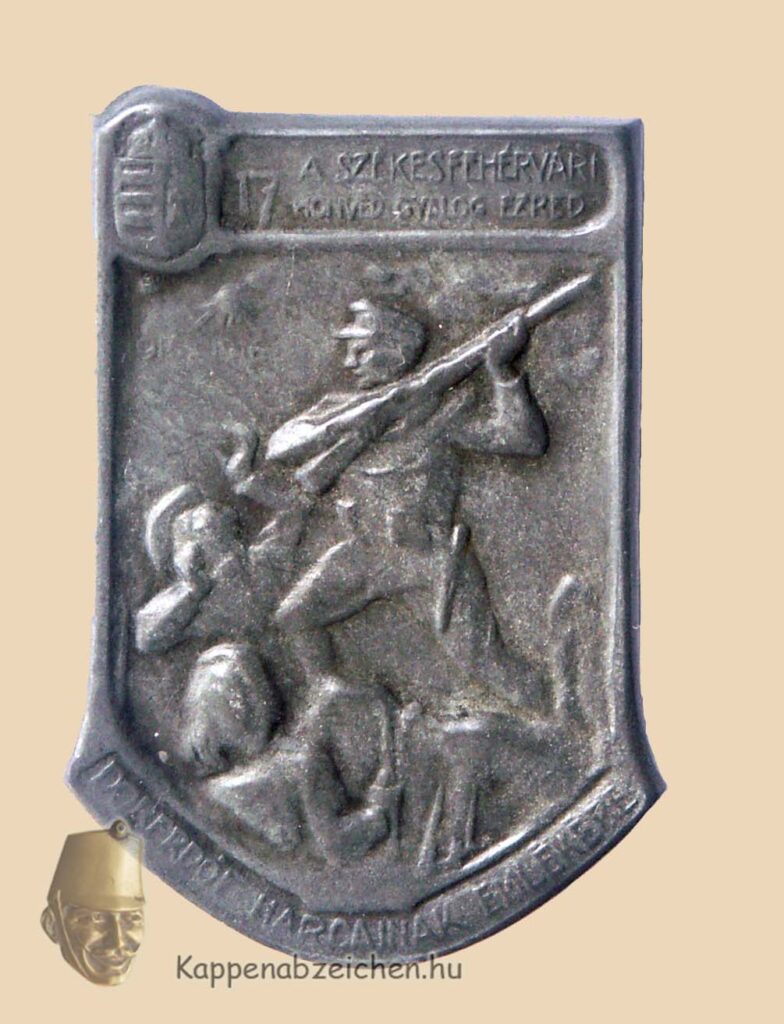
Since the insignia of the HIR 4 had already been included before, I uploaded here the insignia of the 17th Regiment, which also played a major role in the battles.

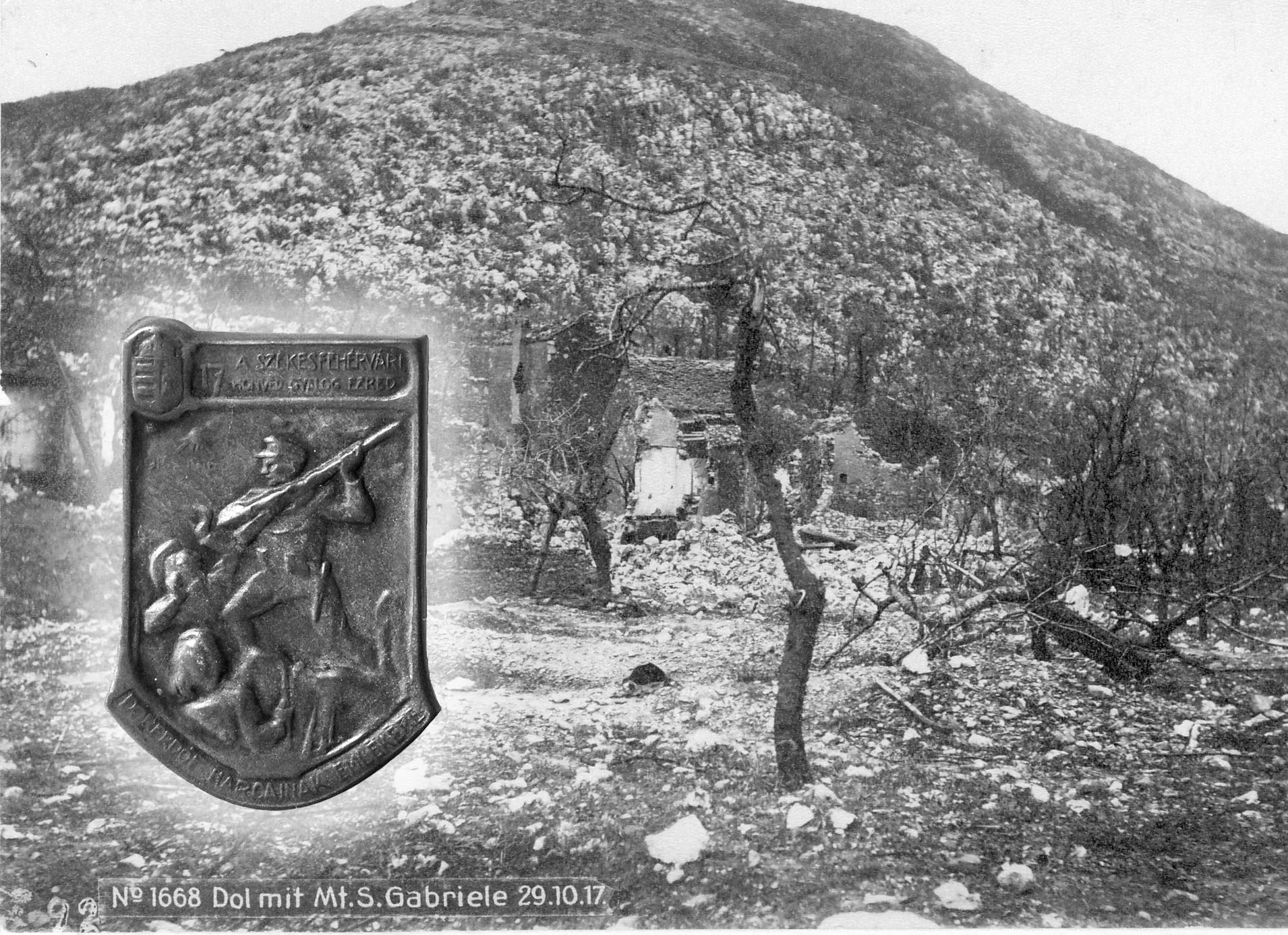
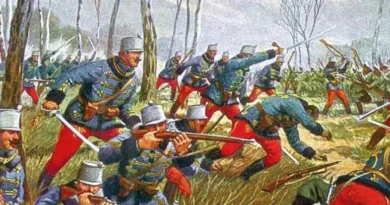
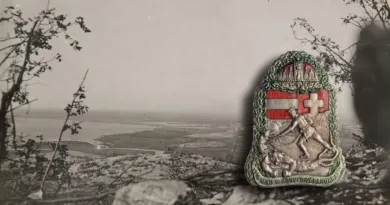
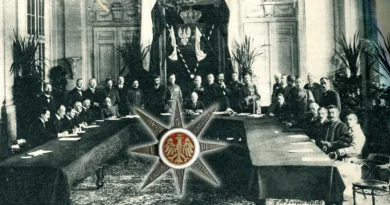
[…] The regiment’s insignia shows a small section of the Italian battlefield that became important from the end of 1916, Mt San Gabriele. In 1916, the Italians occupied the bridgehead in front of Görz. Then the weight of their attack shifted to the left bank of the Isonzo river. The key to the defense here was the possession of this mountain north of Görz. As the badge shows, particularly fierce battles took place here from the end of 1916 to September 1917, until the 11th Battle of Isonzó. In the summer of 1917, the 87th gave their place to the regiments of the 20th Honvéd Division (I wrote about their battles on San Gabriele here). […]